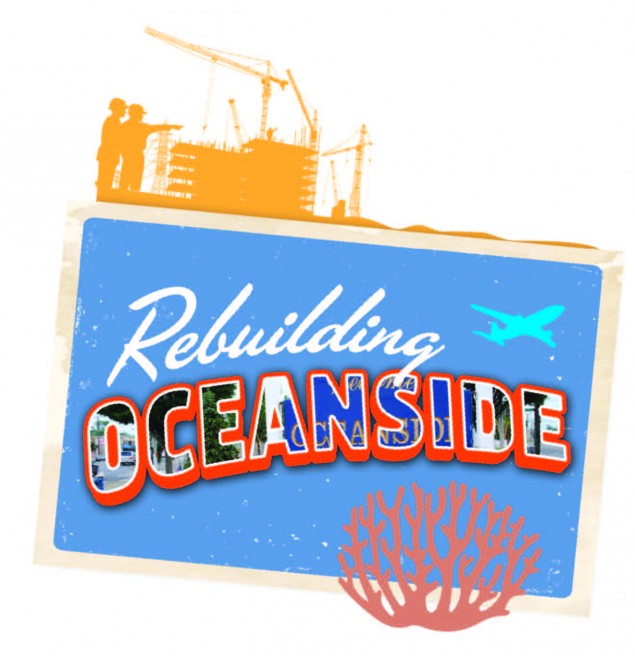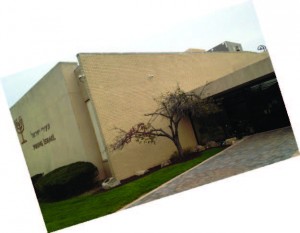Rebuilding Oceanside In the Aftermath of Sandy
Hurricane Sandy left the Oceanside, New York community, on the southern shore of Long Island, with many of its homes devastated and the Young Israel of Oceanside in shambles. The other shuls in Oceanside, Congregation Shaar Hashamayim, Darchei Noam and the Chabad of Oceanside, also suffered extensive damages. This past Rosh Hashanah, the 200-member Young Israel of Oceanside (YIO) witnessed a more powerful flood—one of gratitude. This one, they welcomed.
Ten months after the storm, members of the kehillah stood before their renovated aron kodesh, bursting with emotion; they felt the awe of the day and a profound appreciation for what they managed to accomplish together—rebuilding a community with faith, determination and achdut.
“When crisis hits, people in the community step up,” says Rabbi Jonathan Muskat, rabbi of YIO for the past nine years. Shul members, many of whom experienced extensive damage to their homes and endured no heat or power for weeks, had their own dire situations to deal with. Nonetheless, says Rabbi Muskat, they reached out to others and helped raise funds to rebuild the mikvah as well as the shul.
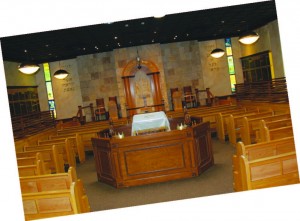
Despite the extensive damage to their own homes in the aftermath of Hurricane Sandy, Oceanside community members stepped up and raised $800,000 to rebuild their shul.
Photos courtesy of David Welner
“I found the sanctuary totally demolished,” says David Welner, former shul president and thirty-five-year resident of Oceanside. Located a few miles from the Atlantic Ocean, the shul was flooded with corrosive salt water. “The aron kodesh had overturned and was floating in over five feet of water; the three Torah scrolls inside were destroyed. Bookshelves collapsed, dumping thousands of sefarim into the water.”
Community leaders met to determine what needed to be done to get the shul up and running. Fundraising topped the list. “We had to rebuild and we had to do it quickly,” says Herb Wallenstein, vice president of the shul and a forty-year resident of Oceanside. “It brought everybody together.” Community members readily pitched in to make fundraising calls. A young woman who grew up in the community but had since moved enlisted the help of her friends via Facebook and Twitter, raising tens of thousands of dollars. In total, the community raised $800,000.
Since so many in the affected areas were also desperately “picking up the pieces,” sheetrock, lumber and contractors were not easy to come by. Fortunately, Welner, who works in real estate, has a solid background in construction and played a leading role in rebuilding the shul. Miriam Nathan, an interior decorator and longtime member of the shul, donated her time and talents to the project as well.
For ten months straight, Welner supervised and coordinated the project, leaving his real estate business mostly in the hands of his staff. Despite the fact that the shul was undergoing construction, adult education classes, youth events and bar mitzvot went on as usual. “We worked around it,” says Wallenstein. “Thanks to the dedicated efforts of the leadership and the patience of the shul members.”
Rabbi Muskat and his community also went to work rebuilding members’ lives. “People needed financial, emotional and spiritual support,” says Wallenstein. “The rabbi was involved with everything. He didn’t take a back seat. He reached out for financial help and assisted those who needed encouragement. Everyone was there for each other. They saw that when the chips are down, they could count on their fellow congregant and neighbor.”
Oceanside-Bound Young Couples
Interestingly, about five years prior to Hurricane Sandy, the shul launched an all-out growth initiative to encourage families to move to Oceanside, offering a generous incentive of a $20,000 interest-free home loan. The overture included active assistance through the entire home-purchasing process. It worked. Fifty young families relocated to the community over the past three to four years, and only a handful actually took the loan offer.
“They advertised a friendly, welcoming place and delivered,” says Rabbi Ari Rockoff, whose in-laws live in the area. “You can’t just wave money [the financial incentive]. It may get people’s attention, but what keeps them is that they had the community facilitating it all for them. They’ll help you buy a home, negotiate the mortgage rate, assist with the closing and renovate and design the home. The money was only a hook. It was the awareness of Oceanside being an attractive, welcoming community that interested them. People feel that what they were sold is what they got.”
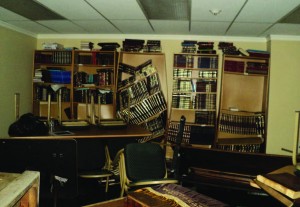
Located a few miles from the Atlantic Ocean, the Young Israel of Oceanside was flooded with corrosive salt water. Bookshelves collapsed, dumping thousands of sefarim into the water.
The community’s cohesiveness throughout the calamity strengthened the loyalty of its new members. “We were worried that the families who had just moved in would say, ‘This is what I moved to?’” says Wallenstein. “There is no one in the Orthodox community [in Oceanside] who is putting his home up for sale. [People] were actually appreciative of having moved here.” Despite the hurricane and its challenging aftermath, families continue to move in. Two young couples recently bought homes and one is currently in contract.
Standing beneath a skylight illuminating a mural of Yerushalayim, the members of YIVO came to Rosh Hashanah services feeling spiritually renewed. “We have emerged even stronger,” says Rabbi Muskat. “The davening was uplifted by the fact that we returned to our shul, a structure more magnificent than ever.”
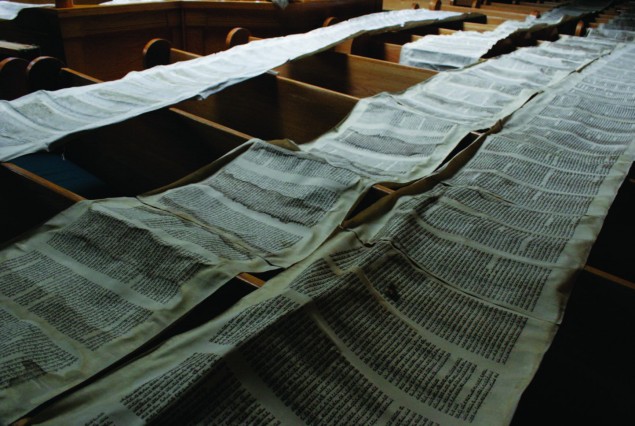
The aron kodesh had overturned and was floating in over five feet of water; the three Torah scrolls inside were destroyed.
The dedicated architect of the shul, soon to celebrate its sixtieth anniversary, agrees. “It was extremely emotional,” says Welner, “to be back in a place we all love so dearly. The Jerusalem stone looked so real, you wanted to go and put a kvittel in it.” When asked what his kvittel would read, he responds, “I would ask Hashem to watch over these new families moving in—the future of Oceanside—that they will be able to rejoice in the shul’s 120th anniversary.”
Bayla Sheva Brenner is senior writer in the OU Communications and Marketing Department.

